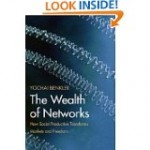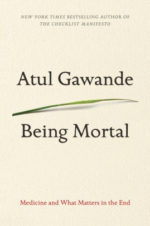Understanding the New Network Economy
Posted on | March 5, 2011 | Comments Off on Understanding the New Network Economy
 Yochai Benkler is the kind of polymath that eclipses ordinary academics. A law professor at Harvard, he also directs the Berkman Center for Internet and Society, which has as its modest mission “to explore and understand cyberspace.” In prior lives, he was the treasurer of a kibbutz in Israel, a practicing lawyer, and a clerk for U.S. Supreme Court Justice Stephen Breyer. But notably, he has recast economics, and he forecasts what may be the political debate of the century.
Yochai Benkler is the kind of polymath that eclipses ordinary academics. A law professor at Harvard, he also directs the Berkman Center for Internet and Society, which has as its modest mission “to explore and understand cyberspace.” In prior lives, he was the treasurer of a kibbutz in Israel, a practicing lawyer, and a clerk for U.S. Supreme Court Justice Stephen Breyer. But notably, he has recast economics, and he forecasts what may be the political debate of the century.
As James Brink, who reviewed Benkler’s book The Wealth of Networks, wrote:
The West is engaged in an escalating culture war. The battlegrounds are the courts, the legislatures, international bodies, local communities, and distant countries that individually may not have much power to affect the outcome through they do have a vital interest in who wins. The war is global—and it is one that has little to do with gay marriage, abortion, terrorism, Darwinsim, or religion. It is in one sense, a war going on above our heads, as it is largely concerned with law and policy, and society and property. In another sense, it is very much a war in the trenches, as it affects our ability to choose how we will live and interact with each other as consumers, creators and citizens.
A Fourth Transactional Network
In the internet, social media, and information processing, Benkler sees the emergence of a fourth transactional network that parallels the price system as its non-market counterpart. Firms, governments, and large non-profits all exist because of the assumption that transaction costs are sufficiently high that markets can’t supply what is necessary. Schools, for example, hire employees rather than bidding for their services on the open market each day. Imagine, the prospect of assembling a new teaching staff each morning as if school were a game of pickup basketball. As economist Ronald Coase recognized three-quarters of a century ago, private firms compete as a part the market’s price system, but internally they depend on managerial fiat to direct labor and other resources because it is too expensive to use the market for these allocations. But Benkler argues in The Wealth of Networks that network technology has allowed a vastly expanded, powerful system of social sharing and exchange to blossom in the non-market sector.
|
Market |
Non-Market |
|
| Decentralized | Price system | Social sharing and exchange |
| Centralized | Firms | Goverments
Large non-profits |
Social sharing is not new. Forms of exchange and reciprocity have characterized societies since the beginning. The novelty comes from the size of social sharing and the extent to which goods and services produced through “commons-based peer production” are, in fact, in robust competition with those in the market sector. For example, Moodle, the open-source course and learning management software, competes with Blackboard and textbook vendor systems.
In commons-based peer production, individual self-identification rather than management authority determines the division of labor in ventures, such as Moodle, Wikipedia, or the virtual reality system Second Life. As Benkler, whose engaging style has garnered him thousands of views on TED, explains, peer-production’s voluntary, self-organizing work confounds conventional economics: “If you leave a fifty-dollar check on the table at the end of a dinner party at a friend’s house, you do not increase the probability that you will be invited again. And if dinner is not intuitively obvious, think about sex.”
In one sense the people who toil fixing source code for Moodle or correcting an article for Wikipedia are economic chumps, giving away what others charge for. But Benkler argues the contrary: that the intrinsic rewards of participation and affiliation are extremely strong, and that through usage of the common product the contributors are rewarded in material ways.
Even corporations, such as IBM, which have been aggressive protectors of proprietary rights, have organized themselves around cultivating the commons and is profiting from it. Over the years 2000-2003, IBM’s revenue from services related to the open-source Linux operating system outstripped that from licenses on the firm’s intellectual property.
The internet is different from other technologies because it passes the power of production and the ability to collaborate in production into the hands of individuals. It does not mean that all the capital necessary to process, store, and communicate information is under individual control. That is not necessary. But with a very modest investment, individuals gain the ability to access information, to take from it, rework it, and submit it back to the commons. (p. 99)
The Conflict Between Old and New
This new form of networked information economy contrasts and conflicts with the older industrial information economy and sets up political battles between the two. Although there has always been an information economy, Benkler argues that it rapidly industrialized in the 19th Century. In 1840 James Gordon Bennett founded the New York Herald for $500, about $11,000 in today’s money. With the advent of the mass circulation press and the capital requirement jumped to $2,500,000 current dollars in a decade, a trend of very high entry costs that characterizes the Industrial Information Economy.
That older economy is being challenged by the Networked Information Economy. Benkler illustrates the conflict with a story about electronic voting machines, which were seen as the answer to the “hanging chads” problem with punch-card ballots. In 2002, Diebold, the leading supplier of electronic voting machines, provided assurance that its new machines were accurate and secure, and these assurances were taken at face value by the mainstream media. But as Benkler notes, less trusting internet activists decided to test the company’s claims. They obtained and published the machine’s specifications and code, and a whistleblower inside the company gave them emails that showed the operating codes for some of the machines had somehow been tampered with after they had been certified for use. Diebold attempted to suppress these findings, claiming the code and emails were protected by the Digital Millennium Copyright Act, but the volunteers—mostly university students—had made and distributed 50 copies, creating a network of information that was nearly impossible to suppress. The online discussion triggered an investigation by California’s secretary of state, who set up an independent investigation, and within a few months many of California’s voting machines were decertified.
Implications for Public Education
The elements of this story have clear implications for public education.
First, there are profound effects on how democracy, public discourse, and watchdog journalism are practiced, and thus how schools can and should teach about it. As Benkler writes, “the ubiquity of storage and communications capacity means that public discourse can rely on ‘see for yourself’ rather than ‘trust me.’” This is a very different history and civics lesson than the one we now teach. It invites the kind of insight that Deborah Meier taught students at the legendary Central Park East academy in New York: Ask about evidence; who is speaking and what’s their point of view; what causes what?
Second, a powerful production system is at work. Students and other volunteers were able to uncover flaws in the Diebold system that professional journalists failed to see, in part because they were too trusting of corporate assurances, and in part because they had neither the knowledge or manpower to delve deeply into the matter. The volunteers had all the necessary tools in their hands. They did not need huge capital investments; all they needed was the ability to share their expertise and tools, which in this case included the sharing the software to unlock Diebold’s encrypted files.
Third, the old economy will use the force of law to strike back. Diebold used the vastly expanded entitlements of the Digital Millennium Copyright Act to threaten the universities the students attended, but in the end the corporation was outmaneuvered by the students, who made so many copies of their files that they could not all be found. Public schools are particularly sensitive to the problems of copyright, and corporations such as Disney have been particularly aggressive at pressing their protections, for example when a teacher shows a cartoon in class. (Which is probably not very good use of class time in the first place, but that’s beside the point.)
The web aphorism, “information wants to be free,” is clashing with what Benkler calls “a second enclosure movement”: a concerted effort to shape the institutional ecology in order to help proprietary models of information production at the expense of burdening nonmarket, nonproprietary production.” (p. 381). The problem is not solely with profit seeking, although there is plenty of that. There is a great deal of legal tradition that favors the assignment of property rights to individuals, regardless of how hard they are to sort out, and hostile to the notion of common production.
This suggests that school districts along with colleges and universities have a very strong interest in creating a workable common space. Universities, more than school districts, have a history of cooperative enterprise, the free sharing of ideas and content among scholars. But they also have a history of claiming rights. Patent and license income is important to many leading research universities, just as it used to be to leading school districts, which in the somewhat distant past developed and sold curriculum to other schools. (Ironically, the current leading provider is the Singapore Ministry of Education, which trades on the high test scores of its students to sell its math curriculum worldwide.)
The nature of this fight involves several different layers of government and technology, and it suggests that both states and the federal department of education have a very large interest in the second enclosure movement fight, largely on the side of openness.




